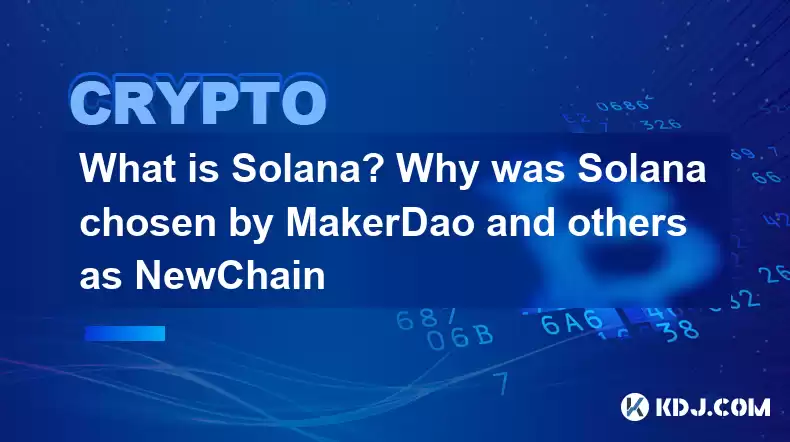-
 Bitcoin
Bitcoin $116400
-0.36% -
 Ethereum
Ethereum $4033
3.40% -
 XRP
XRP $3.302
-1.26% -
 Tether USDt
Tether USDt $1.000
-0.02% -
 BNB
BNB $796.1
1.67% -
 Solana
Solana $177.8
1.89% -
 USDC
USDC $0.9999
0.00% -
 Dogecoin
Dogecoin $0.2314
4.09% -
 TRON
TRON $0.3381
0.14% -
 Cardano
Cardano $0.7989
1.22% -
 Stellar
Stellar $0.4496
-1.84% -
 Chainlink
Chainlink $20.42
9.42% -
 Hyperliquid
Hyperliquid $41.17
0.88% -
 Sui
Sui $3.914
3.77% -
 Bitcoin Cash
Bitcoin Cash $584.7
1.52% -
 Hedera
Hedera $0.2632
-0.54% -
 Avalanche
Avalanche $24.09
3.40% -
 Ethena USDe
Ethena USDe $1.001
-0.02% -
 Litecoin
Litecoin $123.2
1.33% -
 Toncoin
Toncoin $3.318
-0.04% -
 UNUS SED LEO
UNUS SED LEO $8.984
-0.05% -
 Shiba Inu
Shiba Inu $0.00001323
2.85% -
 Uniswap
Uniswap $10.90
4.41% -
 Polkadot
Polkadot $3.999
3.34% -
 Dai
Dai $1.000
0.01% -
 Cronos
Cronos $0.1630
9.64% -
 Bitget Token
Bitget Token $4.484
0.82% -
 Monero
Monero $272.4
2.44% -
 Pepe
Pepe $0.00001173
6.03% -
 Aave
Aave $290.8
2.88%
What is Solana? Why was Solana chosen by MakerDao and others as NewChain
With its high-speed transactions and scalability through Proof-of-History, Solana has emerged as a promising blockchain platform for decentralized applications, attracting the attention of projects such as MakerDAO and Serum.
Feb 06, 2025 at 09:00 pm

Key Points:
- Solana's technical architecture and features, including Proof-of-History and Cloudbreak.
- MakerDAO's motivation for choosing Solana as a NewChain and the potential benefits.
- How other projects, such as Serum, Raydium, and Mango Markets, complement Solana's infrastructure.
- The potential risks and challenges associated with Solana's rapid growth and adoption.
What is Solana?
Solana is a blockchain platform designed for scalability, security, and efficiency. Its novel architecture employs a Proof-of-History (PoH) consensus mechanism, which leverages a cryptographic clock to validate transactions and eliminate the need for traditional block mining.
The PoH mechanism enables Solana to achieve unparalleled speed, processing an impressive 65,000 transactions per second (TPS). This exceptional throughput makes Solana ideal for a wide range of decentralized applications (dApps), including decentralized finance (DeFi), gaming, and supply chain management.
Why was Solana chosen by MakerDAO and others as a NewChain?
MakerDAO, the decentralized autonomous organization (DAO) behind the stablecoin DAI, selected Solana as its NewChain due to several key advantages:
- Scalability: Solana's high TPS and low transaction fees make it well-suited for DeFi applications that require fast and efficient processing.
- Security: Solana's PoH consensus mechanism is highly resistant to malicious attacks and double-spending.
- Developer friendliness: Solana's Rust-based programming language and robust documentation make it easy for developers to build and deploy dApps on the platform.
MakerDAO believes that Solana's scalability will allow it to maintain the stability and liquidity of DAI, particularly during periods of high demand.
The Solana Ecosystem: Complementing Projects
Solana's vibrant ecosystem supports a range of projects that complement its infrastructure and expand its capabilities:
- Serum: A decentralized exchange (DEX) built on Solana, offering fast trading and deep liquidity pools.
- Raydium: An automated market maker (AMM) that facilitates token swaps and yields farming on Solana.
- Mango Markets: A lending and borrowing platform that enables users to earn interest on crypto assets and borrow funds against collateral.
These projects leverage Solana's underlying technology to create a comprehensive and user-friendly environment for DeFi applications.
Potential Risks and Challenges
Despite its impressive capabilities, Solana faces potential risks and challenges:
- Competition: Other blockchain platforms, such as Ethereum and Cosmos, are also developing high-throughput solutions.
- Centralization concerns: Solana's PoH mechanism involves a set of trusted validators, raising some concerns about centralization.
- Security breaches: While Solana's PoH is secure, it remains vulnerable to potential vulnerabilities in the network implementation or smart contracts.
These challenges highlight the importance of ongoing development, security audits, and community involvement to ensure Solana's continued success.
FAQs
- What is Solana's native token?
SOL is the native token of the Solana blockchain, used for transaction fees, staking, and governance. - What is the significance of Solana's Proof-of-History mechanism?
PoH introduces a novel approach to consensus that eliminates block mining, resulting in faster and more energy-efficient transaction validation. - How does Solana compare to other blockchain platforms?
Solana excels in terms of scalability, offering higher TPS than most competing platforms. However, it is important to evaluate the trade-offs, such as potential centralization concerns. - What are the key factors behind MakerDAO's choice of Solana?
MakerDAO selected Solana primarily due to its scalability, security, and developer-friendly ecosystem. - What is the potential use of Solana beyond DeFi?
Solana's capabilities extend beyond DeFi, making it suitable for a diverse range of applications, including gaming, supply chain management, and social media.
Disclaimer:info@kdj.com
The information provided is not trading advice. kdj.com does not assume any responsibility for any investments made based on the information provided in this article. Cryptocurrencies are highly volatile and it is highly recommended that you invest with caution after thorough research!
If you believe that the content used on this website infringes your copyright, please contact us immediately (info@kdj.com) and we will delete it promptly.
- Maxi Doge Presale: The Meme Coin That's Pumping Iron and Prices!
- 2025-08-09 19:10:11
- Rare Coin Warning: Don't Get Fooled by That 1p Coin!
- 2025-08-09 18:50:12
- Cardano, Unilabs, and Tron Price: Decoding the Latest Crypto Buzz
- 2025-08-09 18:30:12
- Aerodrome Finance: Price Targets and the Bullish Channel - What's Next?
- 2025-08-09 18:50:12
- BlackRock and the Crypto ETF Landscape: No XRP (Yet!), But What's Next?
- 2025-08-09 19:10:11
- Rare Coin Frenzy: eBay Sees 2p Coin Listed for Over £2K!
- 2025-08-09 18:55:11
Related knowledge

What is Ethereum’s Slashing mechanism and how to punish malicious behavior?
Feb 20,2025 at 03:08am
Key PointsOverview of slashingDifferent types of slashing in EthereumIncentives and consequences of slashingIdentifying and reporting slashed validato...

What is the verifier node of Ethereum and how to become a verifier?
Feb 19,2025 at 06:00pm
The Verifier Node of Ethereum: A Comprehensive GuideKey Points:What is a Verifier Node?How to Become a Verifier NodeResponsibilities and Rewards of a ...

What is Ethereum’s staking, and how to participate and earn money?
Feb 19,2025 at 04:37pm
Key Points:Understanding Ethereum's Staking MechanismSteps to Participate in StakingBenefits and Rewards of StakingSecurity and Risk ConsiderationsTec...

What is Ethereum’s DAO (Decentralized Autonomous Organization) and how does it work?
Feb 20,2025 at 03:12am
Key PointsDefinition and Structure of a DAOGovernance and Decision-Making in DAOsBenefits and Use Cases of DAOsChallenges and Limitations of DAOsWhat ...

What is Ethereum's multi-signature wallet and how to improve security?
Feb 20,2025 at 02:18pm
Key Points:Understanding the Concept of a Multi-Signature WalletBenefits and Drawbacks of Multisig WalletsRequirements for Setting Up a Multisig Walle...

What is Ethereum's oracle and how to provide data for smart contracts?
Feb 21,2025 at 01:30am
Key Points:Understanding the concept of oracles in EthereumExploring different types of oraclesDetailed guide on how to provide data for smart contrac...

What is Ethereum’s Slashing mechanism and how to punish malicious behavior?
Feb 20,2025 at 03:08am
Key PointsOverview of slashingDifferent types of slashing in EthereumIncentives and consequences of slashingIdentifying and reporting slashed validato...

What is the verifier node of Ethereum and how to become a verifier?
Feb 19,2025 at 06:00pm
The Verifier Node of Ethereum: A Comprehensive GuideKey Points:What is a Verifier Node?How to Become a Verifier NodeResponsibilities and Rewards of a ...

What is Ethereum’s staking, and how to participate and earn money?
Feb 19,2025 at 04:37pm
Key Points:Understanding Ethereum's Staking MechanismSteps to Participate in StakingBenefits and Rewards of StakingSecurity and Risk ConsiderationsTec...

What is Ethereum’s DAO (Decentralized Autonomous Organization) and how does it work?
Feb 20,2025 at 03:12am
Key PointsDefinition and Structure of a DAOGovernance and Decision-Making in DAOsBenefits and Use Cases of DAOsChallenges and Limitations of DAOsWhat ...

What is Ethereum's multi-signature wallet and how to improve security?
Feb 20,2025 at 02:18pm
Key Points:Understanding the Concept of a Multi-Signature WalletBenefits and Drawbacks of Multisig WalletsRequirements for Setting Up a Multisig Walle...

What is Ethereum's oracle and how to provide data for smart contracts?
Feb 21,2025 at 01:30am
Key Points:Understanding the concept of oracles in EthereumExploring different types of oraclesDetailed guide on how to provide data for smart contrac...
See all articles

























































































